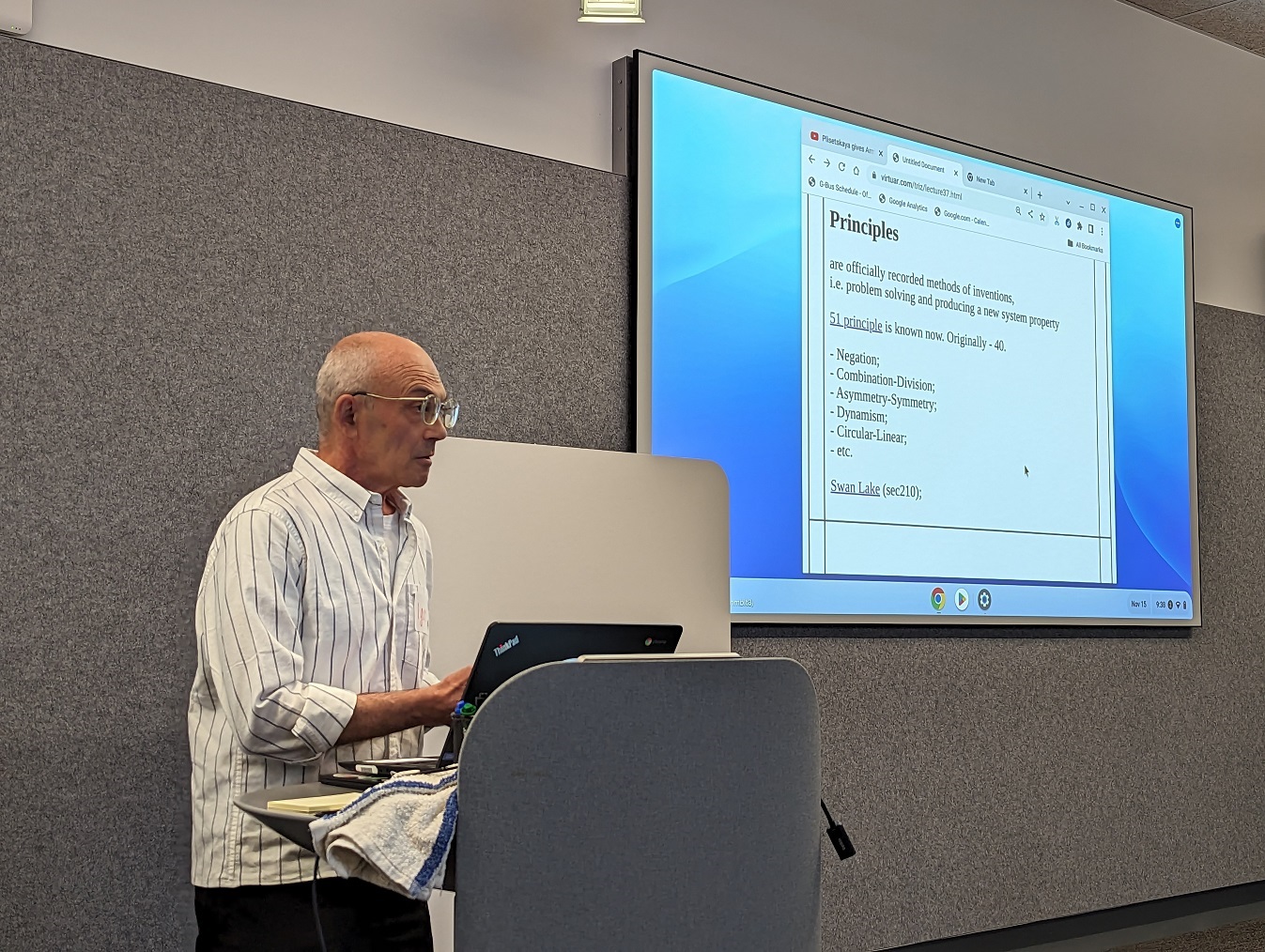
TRIZis "Theory of Inventive Problem Solving" lecture prepared by Igor Polkovnikov, 2023.11.15 |
||||||||||||||||||||||||
PatentsThere are rumors than up to 1000000 patents were analyzed by Altshuller and his disciples. in 40 years of TRIZ development |
||||||||||||||||||||||||
Principlesare officially recorded methods of inventions, 51 principle is known now. Originally - 40. - Negation; Swan Lake (sec210); |
||||||||||||||||||||||||
Different Levels Of ProblemsThe most difficult - containing CONFLICTS |
||||||||||||||||||||||||
AlgorithmThe algorithm of Dialectical Analysis and Synthesis of problems requiring solutions of conflicts from ARIZ 61 to ARIZ 85 General idea: Steps to unblock end encourage the mind to find the best solution of a conflict problem with minimal expenses. There is a notion what is the best solution and |
||||||||||||||||||||||||
Algorithm- contradictions (conflicts); It emphasizes non-standard, paradoxical thinking. Thinking in terms of contradictions and solutions. |
||||||||||||||||||||||||
General Formula of ContradictionsA acts well on B, but does harm (or does not act ) on C; |
||||||||||||||||||||||||
SchoolsMore than 200 schools of TRIZ were founded by G.S.Altshuller in the period 1960-1985. Photo. Google. There all the methods of TRIZ were verified in practice. |
||||||||||||||||||||||||
KnowledgeBaseModern technical and especially scientific information is not suitable for inventors. Knowledge in TRIZ is presented in the form suitable for problem solving: |
||||||||||||||||||||||||
Laws of Technical System EvolutionThe idea is that systems, and particularly technical systems "evolve".
|
||||||||||||||||||||||||
StandardsRules of system changes to succeed along the evolution line. They are fundamentals of Systems Science. Standard 1.1.1: Standard 1.1.2: |
||||||||||||||||||||||||
Functional Analysisis analysis of and problem formulation on large existing systems. A diagram is the result. A nodes of it are Useful Function and Harmful Effects. There are only 3 relations (arrows) in a diagram:
There are only 5 types of problems devised from the diagram:
The graph even for a simple system is gigantic. |
||||||||||||||||||||||||
What is the moving force of Technical Systems Evolution ?You! Everyday's problem solving job of engineers, technicians, marketers, etc.With all your good or bad solutions. However, in a crisis Non-traditional, paradoxical thinking is paramount. So.. Fantasy development + The strategy of Inventor's Life |
||||||||||||||||||||||||
Fantasy Diagram
|
||||||||||||||||||||||||
